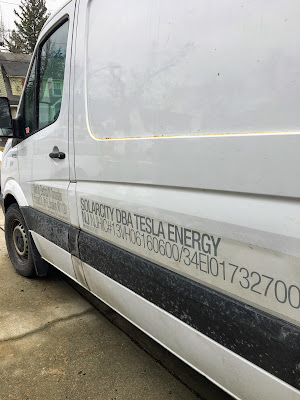Environmental impact of cars
missing in magazine's 2019 Auto Issue
By VICTOR E. SASSON
EDITOR
HACKENSACK, N.J. -- Consumer Reports' 2019 Auto Issue completely ignores the environmental impact of the 260 new vehicles that are rated and reviewed, just like the first such issue in 1948.
Not a single all-electric, zero-emissions vehicle makes the magazine's "10 Top Picks" this year, although the list includes three gas-electric hybrids from Toyota.
Topping the Top 10 is the 22-mpg Subaru Ascent, a 3-row midsize SUV, even though the Japanese automaker's Crosstrek is available as a plug-in gas-electric hybrid that gets far better gas mileage.
Shocking omission
Given climate change, global warming or whatever you want to call the heating up of the atmosphere from burning fossil fuels, the refusal of the magazine's testers to give vehicles an environmental grade is shocking.
When he unveiled the Model 3 in March 2016, Tesla CEO Elon Musk said he hoped the mainstream sedan would accelerate the transition to "sustainable transportation."
And he noted electric vehicles are more important than ever in view of 58,000 premature deaths every year in the United States from tailpipe emissions.
The automotive media, including Consumer Reports (CR), ignored him then just as they are doing know.
Tesla and other automakers should get points for the number of zero-emissions and gas-electric hybrids in their lineup, just as CR knocks itself out praising them for "impressive fuel economy" (19 mpg in the Ford F-150, for example).
Instead, in a March 15 report sent to readers, CR asks, "As Tesla unveils Model Y crossover, should consumers buy into drama-filled company?"
The piece was by Jeff Plungis, identified as CR's lead "automotive investigative reporter."
2019 Auto Issue
In a section on "How the Brands Stack Up" (defined as companies offering "consumers strong-performing and problem-free vehicles") EV maker Tesla dropped 11 places to 19th among 33 brands (behind Buick, but ahead of Ford, Nissan and Chrysler).
On the "Best + Worst Lists," Tesla's Model 3 is "no longer recommended" because of "declining reliability," along with the Acura RDX, Chrysler 300, BMW 5 series, Dodge Charger and Volkswagen Tiguan.
The Model 3 problems described by readers were cosmetic, and don't affect its high safety rating.
No category for EVs
In another section, "New Car Ratings," EVs do not appear in their own categories.
Under "Cars: Compact Electric and Hybrids," two Toyota gas-electric hybrids are rated higher than the Chevrolet Bolt EV Premier, and the Honda Insight EX is tied with the Bolt.
That's bewildering in view of the improved Bolt -- a fast, quiet, tight four-door hatchback you can drive with one pedal:
Lift off the gas and the battery electric car comes to a stop at a crosswalk, stop sign or traffic light.
And CR dropped the Bolt from its Top 10 list this year.
Teslas finish 4th
Tesla's Model 3 is listed 4th among "Cars: Luxury Compact" after the Acura TLX, Infiniti Q50 and Kia Stinger.
The Tesla Model S -- the first car to achieve an overall score of 100 points from CR -- also finished 4th among "Cars: Ultraluxury."
Ahead of the Model S were three gas-thirsty cars the Tesla outsells by far:
Mercedes-Benz S550, BMW 750i (xDrive) and Genesis G90.
Electric Jag?
I could not find any mention in the 2019 Auto Issue of the all-electric 2019 Jaguar I-Pace, which is being advertised on TV in the New York-New Jersey area.
Subaru's Crosstrek, a plug-in hybrid, merits only a few words under "New Car Profiles."
The section on "New Cars Worth Waiting For" lists only 8 vehicles, including 6 gas-guzzling SUVs, 1 sedan and 1 sports car.
Among the 6 so-called sport utility vehicles is the monstrous Lincoln Aviator, to be available with 400- and 450-horsepower engines.
That abomination from Lincoln flunks every environmental test.
SUVs are deadlier
Consumer Reports continues to ignore the menace of big SUVs, which use more gasoline and pollute more than other vehicles, and make traffic congestion worse because they take up so much more space than other vehicles.
Not to mention how aggressively they are driven.
Yet, in a section of the 2019 Auto Issue called "Making the World Safer for Pedestrians," the magazine notes "the unforgiving structure of SUVs, when compared with the lower profile of cars, is adding to the [pedestrian] death toll," according to research by the Insurance Institute for Highway Safety.
"Higher-riding SUVs and other light trucks -- which now account for almost 70 percent of U.S. vehicle sales, up from nearly 50 percent a decade ago -- mean that pedestrians are more likely to be hit in the abdomen or head than at the legs, which leads to more serious injuries and fatalities."
CR says vehicles with pedestrian-detection systems and automatic emergency braking are one way to slow the rising number of pedestrians killed in the past decade.
The magazine said that in 2017, 5,977 pedestrians were fatally hit by vehicles -- a 45 percent increase from 4,109 such deaths in 2009, according to the National Highway Traffic Safety Administration.
So, it's hard to understand how CR can then turn around and recommend any SUV to readers, who could find as much room, all-wheel drive and even a hybrid drivetrain in a minivan.


















